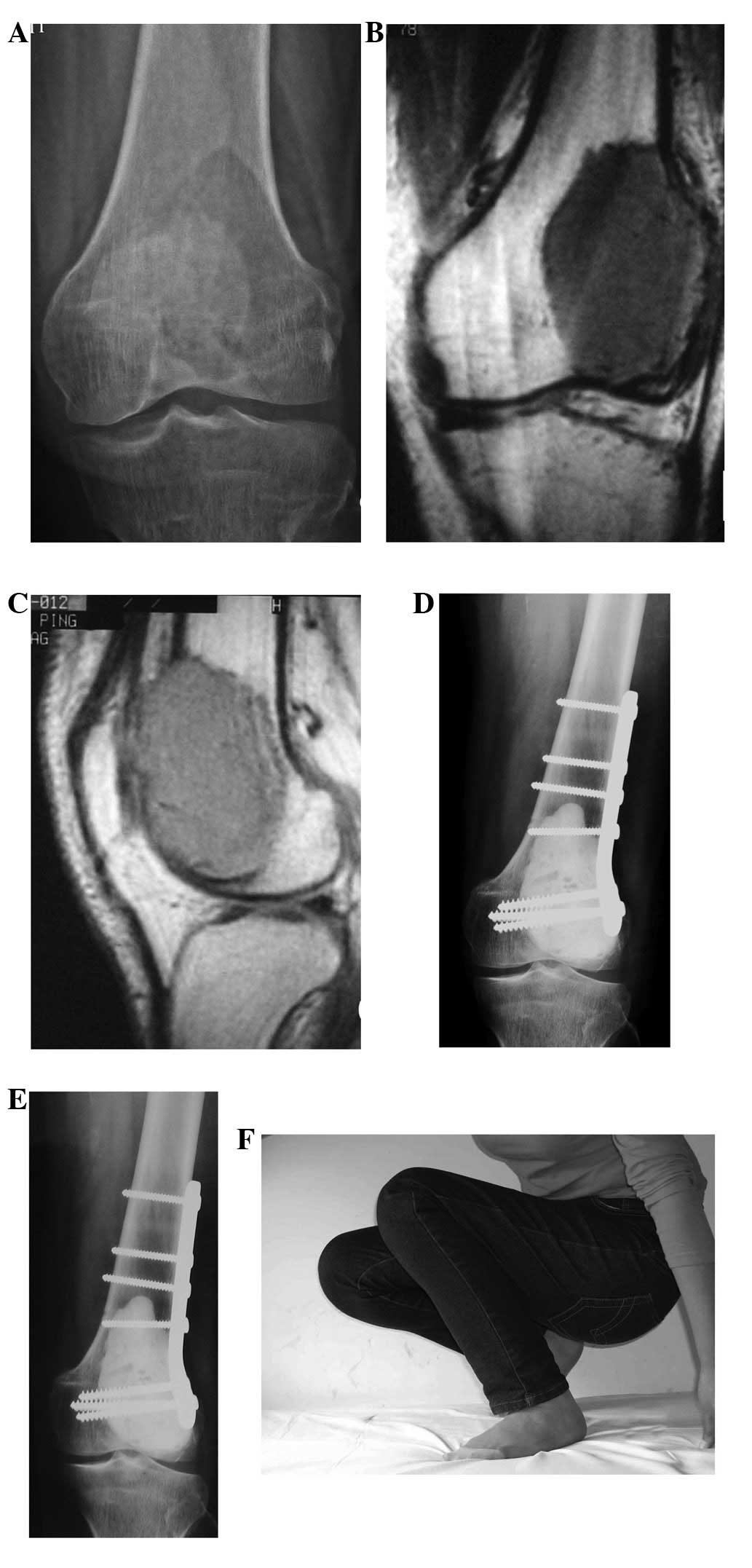Clinical outcomes of giant cell tumor of bone treated with bone cement filling and internal fixation, and oral bisphosphonates
- Authors:
- Published online on: November 20, 2012 https://doi.org/10.3892/ol.2012.1036
- Pages: 447-451
Metrics:
Total
Views: 0 (Spandidos Publications: | PMC Statistics:
)
Total PDF Downloads: 0 (Spandidos Publications: | PMC Statistics:
)
Abstract
Giant cell tumor (GCT) of the bone is a relatively common primary bone tumor. Treatment with simple curettage often results in a high local recurrence rate. Tumor resection and reconstruction with prosthesis or an allograft has a low rate of local recurrence; however, the patient's native joint function becomes significantly impaired. With the development and usage of aggressive curettage, it is a priority to treat GCT with a method that reduces the local recurrence rate and preserves the native joint. To evaluate the feasibility of treating GCT with aggressive curettage and cement filling using internal fixation and oral bisphosphonates, 16 patients with GCT of the bone located in the distal femur and treated in our department from January 2008 to June 2011, were followed up. The patients had received aggressive curettage, bone cement filling, internal fixation and oral administration of bisphosphonates.There were seven males and nine females in total, with a mean age of 38 years. All patients were carefully assessed prior to surgery in order to determine the integrity of the tumor cavity. Subsequently, patients were treated with aggressive curettage by high-speed burring and cementation with internal fixation, and were administered postoperative oral alendronate sodium tablets (10 mg/day) for two years. The median follow-up time was 25 months. None of the patients were lost to follow-up. No local recurrence or metastasis was observed in the last follow-up. The Enneking limb function score range of the affected limb was 24‑29 (average, 26.7). At the last follow‑up, all patients exhibited solid fixation without fracture of the subchondral bone in plain radiographs. Based on these data, we suggest that patients with distal femoral GCT may be treated with aggressive curettage and cement filling, with internal fixation and oral bisphosphonates. The advantages of this method are its safety and efficacy. However, the long-term outcomes require further investigation.












